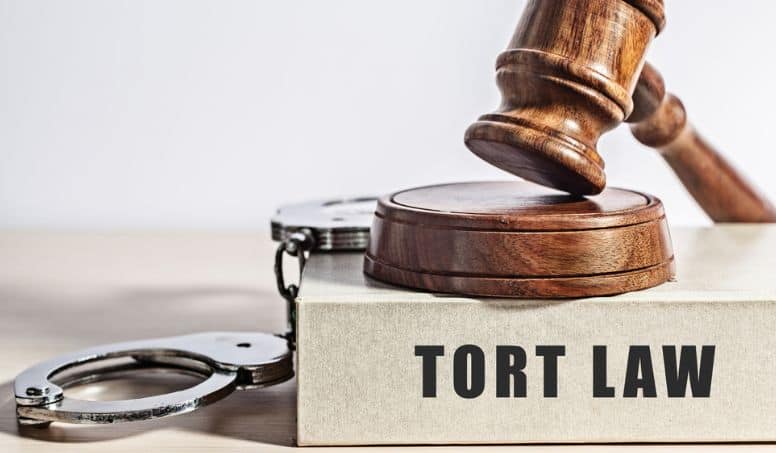Tort law is a critical branch of civil law that deals with wrongful acts leading to personal injury or harm, whether intentional or accidental. These wrongs often give rise to legal claims, which can result in financial compensation to the injured party. Unlike criminal law, which focuses on punishing the wrongdoer, tort law is primarily concerned with compensating the victim for damages. This legal doctrine plays a vital role in society by providing individuals with a framework for seeking justice when they suffer losses or injuries due to someone else’s actions.
Table of Contents
ToggleThe Purpose and Scope of Tort Law
The purpose of tort law is to restore the injured party to the position they would have been in if the tortious act had not occurred. While this is typically achieved through financial compensation, it can also involve non-monetary remedies, such as injunctions or specific performance orders. Tort law serves several functions in modern society:
- Compensation: It ensures that victims receive appropriate reparation for their losses.
- Deterrence: The threat of litigation and financial liability serves as a deterrent to individuals and organizations, encouraging them to act responsibly and avoid causing harm.
- Justice: It promotes fairness by holding individuals accountable for their actions.
- Vindication of Rights: Tort law provides a mechanism through which individuals can assert their legal rights when violated.
Types of Torts
Torts are generally divided into three broad categories: intentional torts, negligence, and strict liability torts. Each type of tort has distinct elements that must be proven in court to establish liability.
1. Intentional Torts
Intentional torts occur when an individual deliberately engages in actions that cause harm to another person. Unlike accidents, intentional torts involve wrongful conduct that the perpetrator knew, or should have known, would result in harm. Some common examples of intentional torts include:
- Assault and Battery: Assault involves the threat of imminent harm, while battery refers to the actual physical contact that results in injury. In both cases, the harm is intentional.
- False Imprisonment: This occurs when an individual is unlawfully confined or restrained without consent or legal justification.
- Trespass to Land: Trespass involves entering another person’s property without permission or legal right.
- Defamation: Defamation includes libel (written) and slander (spoken) statements that harm another person’s reputation by presenting false information.
For these claims to be successful, the plaintiff must show that the defendant acted with intent to cause harm or with reckless disregard for the consequences of their actions.
2. Negligence
Negligence is the most common type of tort and arises when someone fails to act with the care that a reasonable person would exercise in similar circumstances. To succeed in a negligence claim, the plaintiff must establish four key elements:
- Duty of Care: The defendant had a legal obligation to act with care towards the plaintiff. This duty varies depending on the relationship between the parties and the situation in question.
- Breach of Duty: The defendant violated or breached this duty by acting negligently or failing to act appropriately.
- Causation: The breach of duty directly caused the plaintiff’s injury or harm. This can involve two types of causation: factual causation (but for the defendant’s actions, the harm would not have occurred) and legal causation (the harm was a foreseeable consequence of the defendant’s actions).
- Damages: The plaintiff must demonstrate that they suffered actual harm, whether physical, emotional, or financial.
Negligence cases are common in various areas of life, from medical malpractice to car accidents. Courts look at the specific circumstances of each case to determine whether the defendant’s conduct fell below the standard of care.
3. Strict Liability Torts
Strict liability torts hold a party responsible for damages without the need to prove negligence or intent. This doctrine applies primarily in cases where activities are inherently dangerous or where harm is caused by defective products. In these cases, liability is imposed regardless of fault, meaning that the injured party does not need to prove that the defendant was careless or intended harm.
Examples of strict liability include:
- Product Liability: Manufacturers can be held strictly liable if a defective product causes harm to a consumer, even if the manufacturer was not negligent in the production process.
- Abnormally Dangerous Activities: Engaging in activities that carry an inherent risk of harm, such as using explosives or keeping wild animals, can result in strict liability if someone is injured.
Defenses in Tort Law
Defendants in tort cases can raise several defenses to avoid or reduce liability. Some of the most common defenses include:
- Consent: The defendant may argue that the plaintiff consented to the activity that caused the harm, either explicitly or implicitly. For example, someone participating in a contact sport may consent to a certain level of physical risk.
- Contributory Negligence: In some jurisdictions, if the plaintiff is found to have contributed to their injury through their own negligence, they may be barred from recovering any damages. However, many jurisdictions now apply a system of comparative negligence, where damages are reduced in proportion to the plaintiff’s level of fault.
- Assumption of Risk: If the plaintiff voluntarily assumes a known risk, such as engaging in a dangerous activity like skydiving, the defendant may argue that they are not liable for resulting injuries.
- Statutory Immunity: In some cases, statutes or laws provide immunity to certain parties, such as government entities or charitable organizations, shielding them from liability under specific circumstances.
The Evolution of Tort Law
Tort law has evolved over time to address new challenges in an increasingly complex society. For instance, the rise of mass production and industrialization in the 19th and 20th centuries led to the development of product liability law, ensuring that manufacturers could be held accountable for injuries caused by defective goods. Additionally, advances in technology, medicine, and environmental awareness have created new areas of liability, such as cyber torts and environmental torts.
Modern tort law also reflects society’s growing emphasis on consumer protection, with legal doctrines increasingly focused on protecting individuals from harm caused by businesses, professionals, and corporations. This includes stronger regulation of industries that pose risks to public health, such as pharmaceuticals and food production.
Conclusion
Tort law remains a dynamic and essential part of the legal system, serving to protect individuals from wrongful actions and ensure that victims receive fair compensation. By holding individuals and entities accountable for their actions, tort law not only promotes justice but also fosters a safer and more responsible society. The principles of tort law—duty of care, accountability, and the protection of rights—continue to be relevant as society faces new and evolving challenges. Whether dealing with intentional misconduct, negligence, or strict liability, tort law provides the necessary framework for addressing harm and restoring justice in civil disputes.











